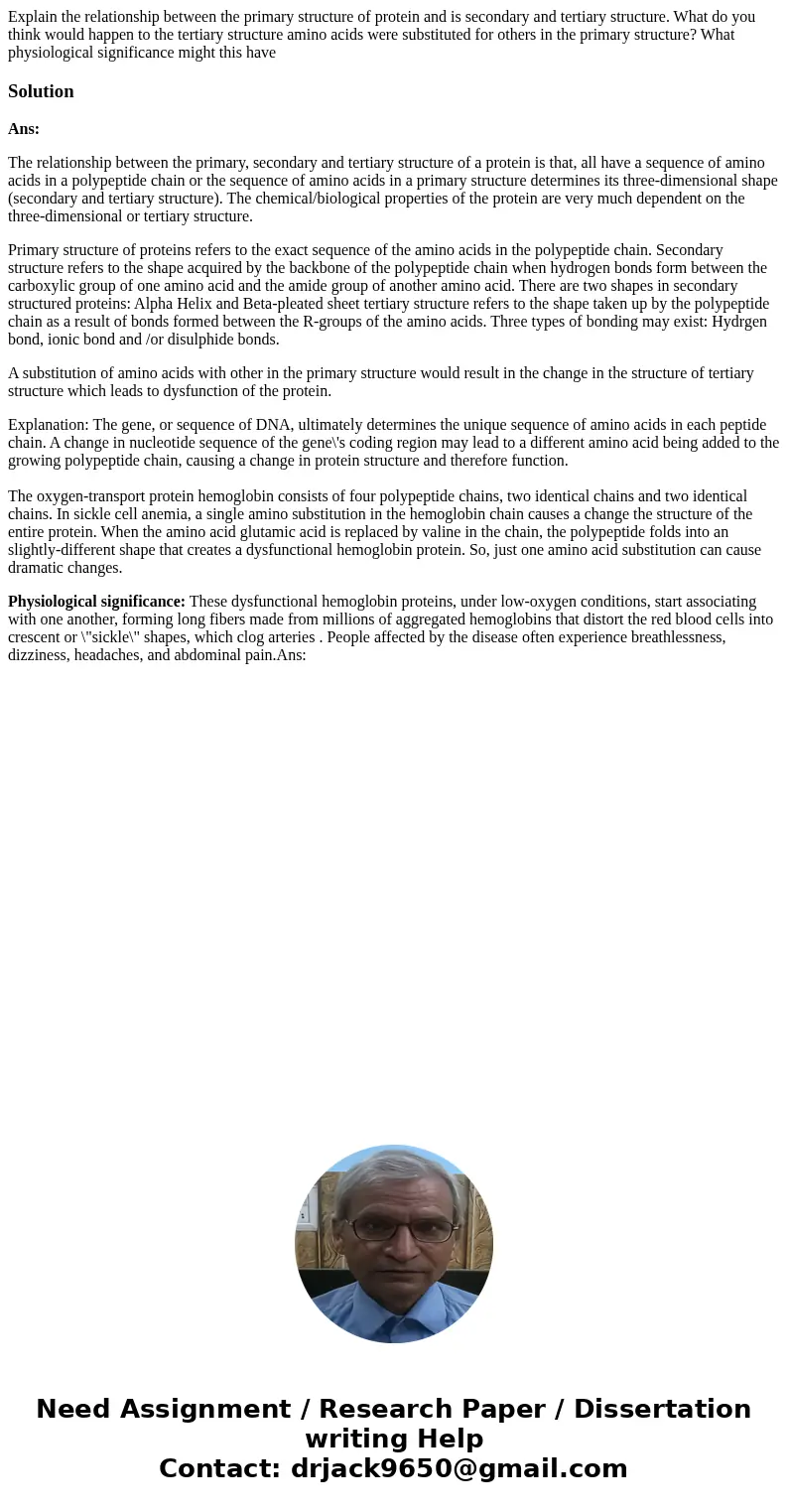Explain the relationship between the primary structure of pr
Solution
Ans:
The relationship between the primary, secondary and tertiary structure of a protein is that, all have a sequence of amino acids in a polypeptide chain or the sequence of amino acids in a primary structure determines its three-dimensional shape (secondary and tertiary structure). The chemical/biological properties of the protein are very much dependent on the three-dimensional or tertiary structure.
Primary structure of proteins refers to the exact sequence of the amino acids in the polypeptide chain. Secondary structure refers to the shape acquired by the backbone of the polypeptide chain when hydrogen bonds form between the carboxylic group of one amino acid and the amide group of another amino acid. There are two shapes in secondary structured proteins: Alpha Helix and Beta-pleated sheet tertiary structure refers to the shape taken up by the polypeptide chain as a result of bonds formed between the R-groups of the amino acids. Three types of bonding may exist: Hydrgen bond, ionic bond and /or disulphide bonds.
A substitution of amino acids with other in the primary structure would result in the change in the structure of tertiary structure which leads to dysfunction of the protein.
Explanation: The gene, or sequence of DNA, ultimately determines the unique sequence of amino acids in each peptide chain. A change in nucleotide sequence of the gene\'s coding region may lead to a different amino acid being added to the growing polypeptide chain, causing a change in protein structure and therefore function.
The oxygen-transport protein hemoglobin consists of four polypeptide chains, two identical chains and two identical chains. In sickle cell anemia, a single amino substitution in the hemoglobin chain causes a change the structure of the entire protein. When the amino acid glutamic acid is replaced by valine in the chain, the polypeptide folds into an slightly-different shape that creates a dysfunctional hemoglobin protein. So, just one amino acid substitution can cause dramatic changes.
Physiological significance: These dysfunctional hemoglobin proteins, under low-oxygen conditions, start associating with one another, forming long fibers made from millions of aggregated hemoglobins that distort the red blood cells into crescent or \"sickle\" shapes, which clog arteries . People affected by the disease often experience breathlessness, dizziness, headaches, and abdominal pain.Ans:

 Homework Sourse
Homework Sourse